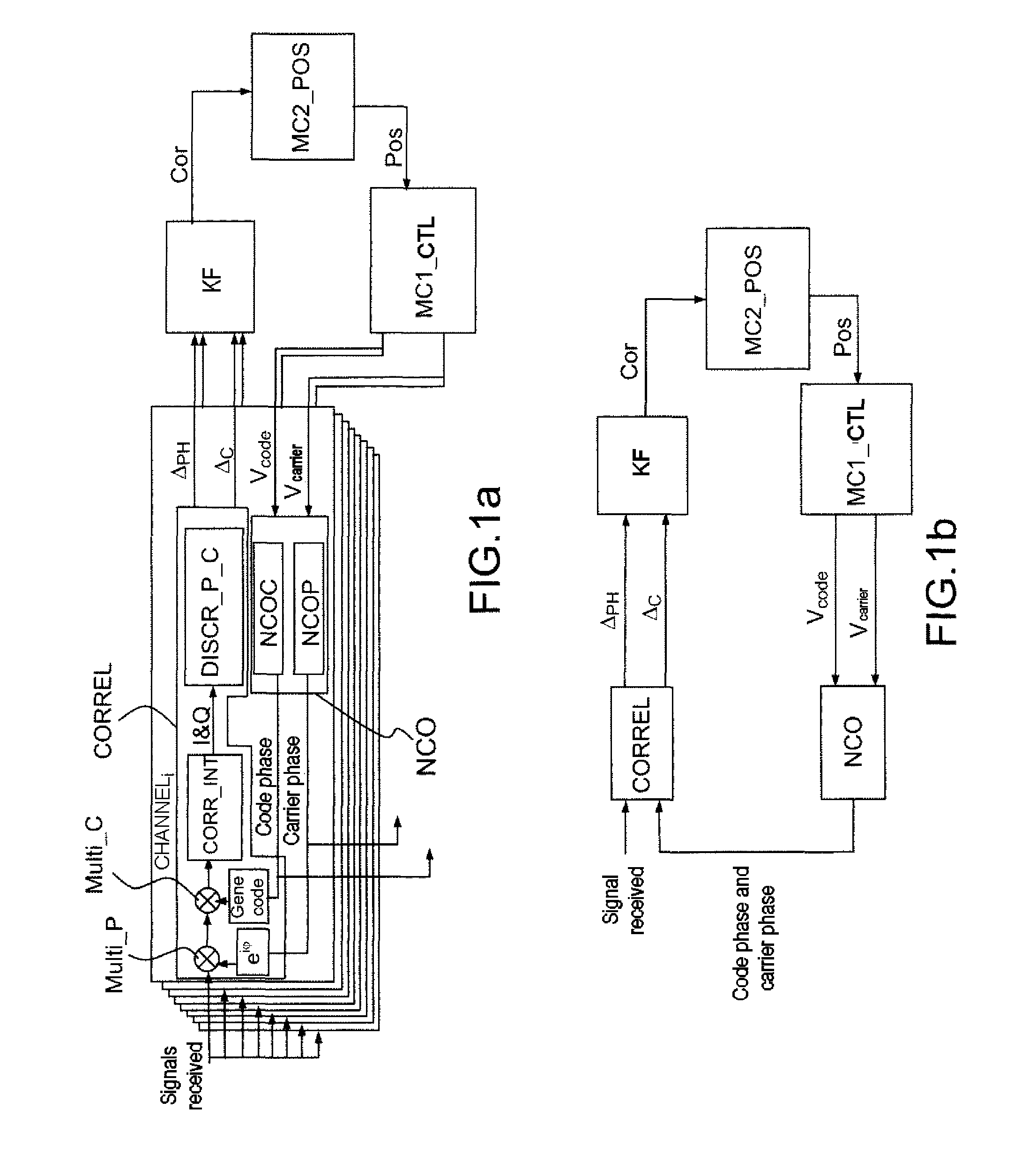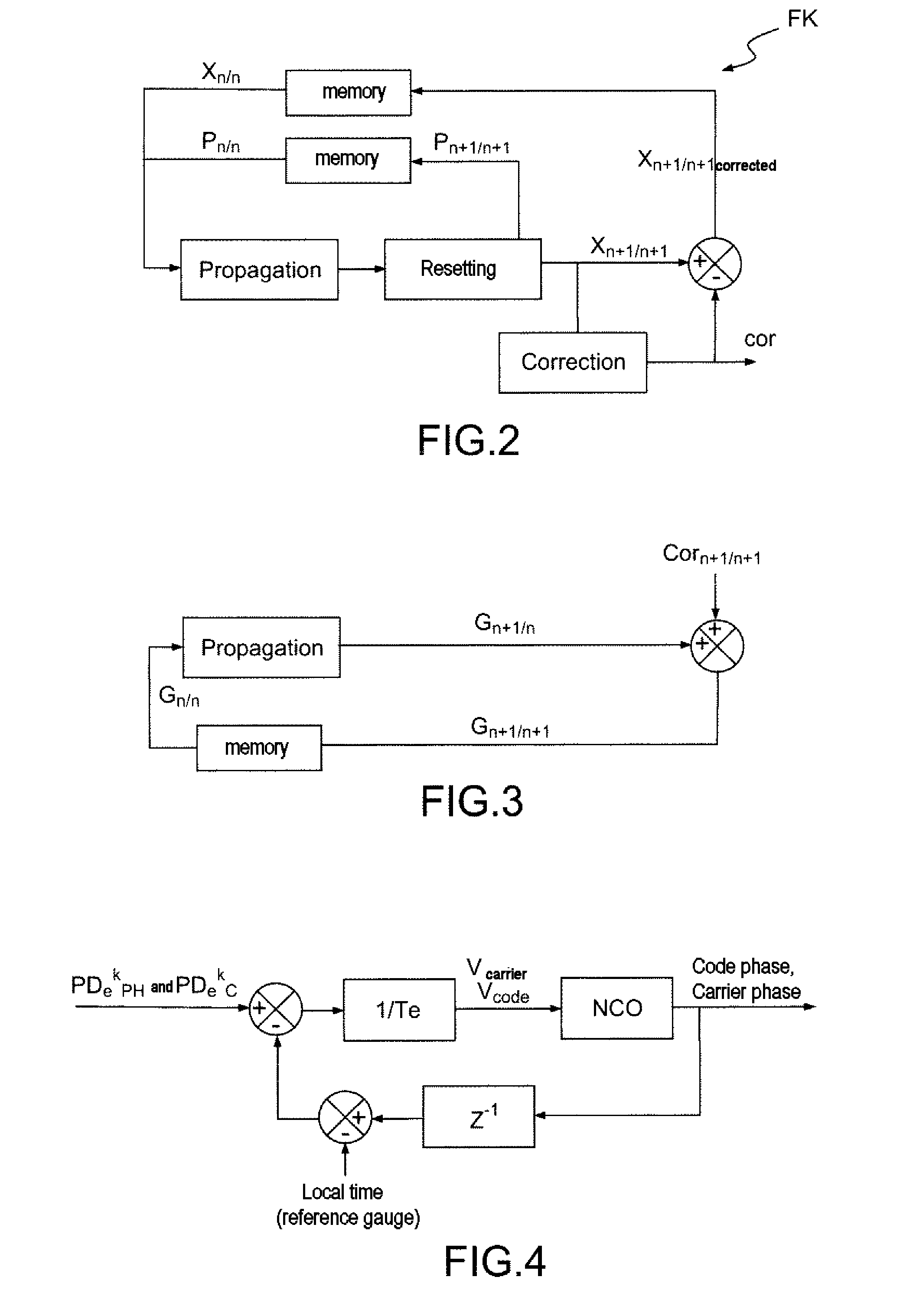Satellite-based positioning receiver
a satellite-based positioning and receiver technology, applied in satellite radio beaconing, measurement devices, instruments, etc., can solve problems such as lack of precision, inability to circumvent system-related errors, and inability to measure pseudo-distance, etc., to achieve the effect of improving the accuracy of results
- Summary
- Abstract
- Description
- Claims
- Application Information
AI Technical Summary
Benefits of technology
Problems solved by technology
Method used
Image
Examples
Embodiment Construction
[0078]In the description that follows, similar elements bear the same reference characters.
[0079]In FIG. 1a, a satellite-based positioning receiver comprises processing channels CHANNELi, each associated with a respective satellite from among N satellites, an extended Kalman filter KF adapted for performing a vector tracking, for the set of satellites, of the signals received from the N satellites. The extended Kalman filter KF is adapted for performing a propagation of an estimated state vector comprising the said position error, and for implementing a matrix propagation equation involving a propagation matrix.
[0080]Each channel CHANNELi comprises a code generator Genecode, a phase generator eiφ, correlators with integrators CORR_INT, phase and code discriminators DISCR_P_C, a code phase numerically-controlled oscillator NCOC, and a carrier phase numerically-controlled oscillator NCOP. The set formed by the code phase numerically-controlled oscillator NCOC and by the carrier phase ...
PUM
 Login to View More
Login to View More Abstract
Description
Claims
Application Information
 Login to View More
Login to View More - R&D
- Intellectual Property
- Life Sciences
- Materials
- Tech Scout
- Unparalleled Data Quality
- Higher Quality Content
- 60% Fewer Hallucinations
Browse by: Latest US Patents, China's latest patents, Technical Efficacy Thesaurus, Application Domain, Technology Topic, Popular Technical Reports.
© 2025 PatSnap. All rights reserved.Legal|Privacy policy|Modern Slavery Act Transparency Statement|Sitemap|About US| Contact US: help@patsnap.com



